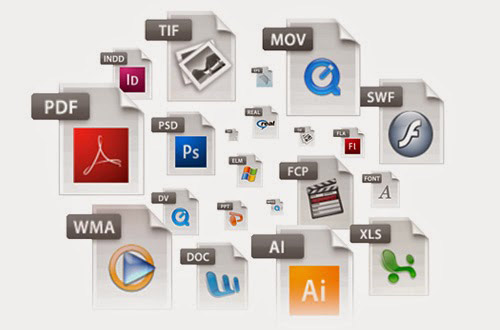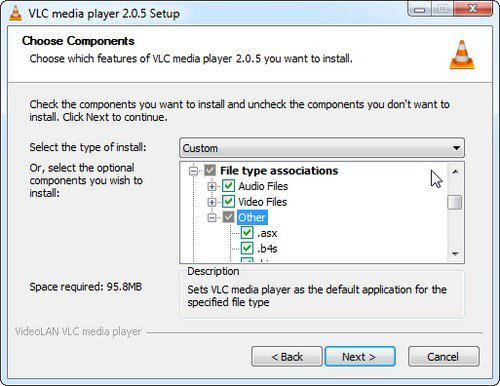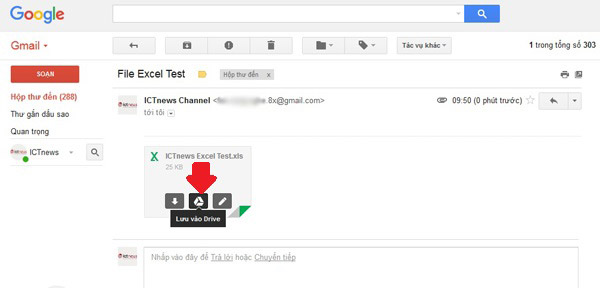Some file systems name extensions as a feature of that system. The name of a system may be limited to the length and format of the extension. In other cases, the filename extension or file extension is considered to be part of the file name without any distinction.
What is a file extension?
File extensions or file name extensions are the letters that are displayed immediately after the last paragraph in the file name. For example, the file extension.txt has an extension of .txt. This extension lets the operating system know what kind of file it is and what program will run when you open the file.
The rule about how to format the extension is to start with a dot and have at least one character. For most cases, the file extension consists of three characters, usually letters or numbers. Some examples of file extensions include .txt, .mp3, .jpg and .gz, which will represent text files, mp3 files, jpeg image files, and files compressed using gzip. As you can see, the actual extension provides basic information about the file type.

When trying to determine an extension of a file, it is important to remember that the extension is simply the last paragraph in a file name and consists of characters. If there are no paragraphs in a file name, it has no extension. To make it easier to understand what a file extension is, please see the examples in the table below:
| file name | Extention | note |
| report_card.txt | .txt | Extensions are the characters after the period |
| Terminal.app | .app | Extensions are the characters after the period |
| Postcard.pdf.exe | .exe | Filenames are a little more complicated than usual, with up to 2 paragraphs after the period. But you should remember the principle: Extensions are just the last paragraph (including dots and characters) only. |
As mentioned, an operating system knows which program to use to view, print or edit a specific file by viewing its extension. It can do this because each operating system in the configuration has a default mapping between a file extension and a specific program. Using this information, when the user clicks on a file, reads the file extension and then launches the mapped application. Usually, if the extension is not known by the operating system or no application mapping exists, it will prompt the user to specify the program that wants to open the file.
By default, Windows and Mac OS do not display file extensions. To view file extensions, you first need to enable them or you can also change the program that the operating system uses to open a specific extension.
How to change the program associated with the file extension
As mentioned, the file extension is mapped to a specific program so that when you try to open the file, the operating system will know which application will launch. Sometimes you may want to change the default link, use another program to automatically open the file. For example, when you open an image file on Windows, it will default to the built-in Windows Photo Viewer. In the future if you find a new program and want to use it to open image files, you can change the links for image files to open them with the new program.

How malware uses extensions to trick users into opening files that contain viruses
A common trick that malware will use to trick you into running an infected program is to send an email attachment with a file name containing two dots in it. For example sales_report.xls.exe. As you can see the file has the .exe extension, which means it is an executable file. But you should not run this program.
What if the .exe extension is removed from the file name and becomes sales_reports.xls? It's a name that looks harmless, and if you get this file from a friend, you'll think it's safe and double click on it. When you double click on it, the file will be executed later and infect the virus to your computer.

Malware makers know that this method can trick many people because by default, Windows does not show users file extensions. Therefore, if you have not enabled file extensions, the window will only show you everything before the last paragraph in the file name and you may think it is the full name. So, this is a common tactic for malware spammers or spammers because they know that Microsoft will remove the last part and make the file seem safe.
Therefore, it is important to always display file extensions in Windows so that you are not fooled by this tip.
Below is a list of common file extensions that you can find on your computer or via the Internet.
The extension of the audio file
Extentions | Descriptions |
| .aif | Audio Interchange File is the most commonly used audio file format on Apple Macintosh computer systems. |
| .m3u | M3U files are used to store multimedia playlists. |
| .mp3 | MP3 files are the most common file format used to store digital audio, used on computers and digital media devices. |
| .ra | Audio file created by RealAudio. |
| .wav | WAV or Waveform Audio File Format is an audio file format used to store audio on a PC. |
| .wma | Windows Media Audio or WMA is an audio file format developed by Microsoft. |
Video file extension
| Extentions | Descriptions |
| .avi | Audio Video Interleave or AVI is a video and audio file created by Microsoft. |
| .flv | File flash video |
| .mov | Film Apple QuickTime. |
| .mp4 | File video |
| .mpg | File video MPEG format |
| .wmv | Windows Media Video or WMV is video file of Microsoft |
Image file extension
| Extention | Descriptions |
| .bmp | Bitmap or BMP is an image file used to store bitmap digital images. These files are usually found in Windows. |
| .cur | The CUR file format is used to store pointers with no animation in Windows. |
| .ico | The ICO file format is used to store computer icons in Microsoft Windows. |
| .gif | Graphics Interchange Format, or GIF, is an image file format created by Compuserve. This is a common format on computers and the Internet. |
| .jpg | A JPEG image file is a common file found on computers and the Internet. |
| .jpeg | Another extension corresponds to a JPEG image file. |
| .png | Portable Network Graphic or PNG is an image file created to replace the GIF file. This is a common format on computers and the Internet. |
| .psd | A Photoshop Document or PSD is a file used to store images created by Adobe Photoshop. |
| .raw | The raw image format is often used by digital cameras to save images in a format that is currently not processed. |
| .tif | Tagged Image File Format or TIF is an image fle often used by artists and photographers. |
Workplace application extensions and text files
| Extentiosn | Descriptions |
| .csv | Comma Separated Value or CSV is a text file containing data lines separated by commas. |
| .doc | Word Document or DOC is the extension that Word will save its document. |
| .docx | Starting with Word 2007, the .docx file format became the standard file that Microsoft Word would save. |
| .log | A text file usually contains a text journal about the application or computer process performed or transmitted. |
| Portable Document Format or PDF is a file format created by Adobe Systems. This file format is used to create documents that contain specific fixed layouts, regardless of the operating system or application opening them. | |
| .pps | Microsoft PowerPoint presentation file. |
| .ppt | PowerPoint Document or PPT is the extension that PowerPoint will save the document. |
| .pptx | Starting with PowerPoint 2007, the .pptx file format became the standard file where Microsoft PowerPoint would save files. |
| .rtf | Rich Text Format or RTF created by Microsoft allows text formatting, such as bold or underlined, in text documents. |
| .txt | A text file is a file that contains text data of any format. |
| .wpd | Standard file format for saving WordPerfect documents. |
| .wps | A Microsoft Works document. |
| .xlr | Microsoft Works spreadsheet file. |
| .xls | Excel Document or XLS is the standard file format that Microsoft Excel will save the file, but has been changed to .xlsx starting with Excel 2007. |
| .xlsx | Starting with Excel 2007, the .docx file format became the standard file that Microsoft Excel would save files as. |
Compressed file extension or archive utility
| Extentions | Descriptions |
| .7z | The original archive format was created by 7-Zip. |
| .bz2 | The file was compressed with bzip2. This file format is commonly used on Linux and Unix systems. |
| .cab | Cabinet or CAB is a compressed archive format used by Microsoft. |
| .deb | The Debian Software Package or DEB is a file used to install applications in Debian. |
| .gz | The file is compressed with gzip. This file format is commonly used on Linux and Unix systems. |
| .pkg | A package or PKG is a file used to install applications in Apple OS. |
| .rar | Roshal Archive or RAR is the archive format used by WinRar. |
| .rpm | The RPM Package Manager or RPM is a file used to install applications in the Linux operating system. |
| .sit | Stuffit or SIT is a compressed file developed by Stuffit. |
| .sitx | Stuffit X-compressed or SITX is a compressed file from Stuffit. |
| .tar | An archive file created by the Tar utility. This type of file format is commonly found on Linux and Unix operating systems. |
| .tar.gz | This is a tar file compressed with the Gzip utility. |
| .zip | A ZIP file is a compressed archive file. This is the most common compression format on computers and on the Internet. Windows and Macintosh have built-in support for Zip files. |
| .Z | A file that has been compressed with the Linux or Unix compress command. |
Web and Internet extensions
| Extentiosn | Descriptions |
| .css | Cascading Style Sheets or CSS are cascading style sheets, describing how HTML is displayed in HTML files. |
| .htm | Hypertext Markup Language or HTML is a file containing HTML markup language, used to display rich content on web pages. |
| .html | Similar to .htm |
| .js | Javascript or JS are files that contain scripts that will be executed by your web browser. |
| .part | When you download a file, the downloaded information will be stored in a part file until the file is downloaded. Once completed, the file will be renamed to the actual name. |
The image extension on the drive
| Extentions | Descriptions |
| .dmg | Apple Disk Image or DMG is a file that contains the archive of a hard disk or a CD / DVD. |
| .iso | An ISO image file is an archive of an optical drive, such as a CD or DVD drive. |
E-mail extension
| Extentiosn | Descriptions |
| .eml | Some applications like Microsoft Outlook Express, Windows Mail, and Mozilla Thunderbird save your e-mail as separate eml files on your hard drive. If you double click on them, your mail application will open each email that it represents. |
| .emlx | Same as .eml file, but for Apple Mail. |
| .mbx | The MBX file represents a specific directory in the mail application. The name of the file will usually be named after the actual directory it represents. |
| .pst | Microsoft Outlook data file contains all contacts, e-mail, mailboxes and calendar |
| .vcf | vCard or VCF is a file that acts as an electronic business card. When you receive e-mail, you can open them and have the contact details entered into the Mail Client application. |
Enforcement extension
| Extentions | Descriptions |
| .app | Application or APP is a Mac OS application. These applications are actually directories with the extension of .App. |
| .bat | A batch file is a text file containing a series of commands. When launching the batch file these commands will be executed. |
| .cgi | Common Gateway Interface or CGI is an executable file that is allowed to run on the web server. |
| .com | This is an executable file for Dos & Windows operating systems. |
| .exe | This is an executable file for Dos & Windows operating systems. |
| .pif | The Program Information File or PIF is the file used to launch a DOS program in a Windows multi-tasking environment using certain settings. |
| .vbs | A file containing a visual basic script can be executed by double clicking on it. |
Windows extension
| Extentions | Descriptions |
| .cpl | Windows Control Panel File: Double-clicking on this file will launch the associated control panel. |
| .dll | Dynamic Link Library or DLL is a shared library in Windows. Executable files will use these DLLs to run properly. |
| .dmp | A memory dump file is a file created by Windows when a program fails. These memory dump files can be used to determine why a specific program fails. |
| .lnk | These file types are links or shortcuts to executable files located elsewhere on the Windows operating system. These .lnk files are just a pointer to the executable and can be deleted without affecting the executable itself. |
| .msi | Windows Installer files can be used to install applications on your computer. |
| .reg | The Windows Registry file is a file that can be used to make modifications to the Windows Registry. You should never double-click on these files unless you are sure what you are doing. |
| .sys | The Windows driver file is a file that allows Windows to communicate with the hardware installed on the computer |
| .tmp | Temporary files created by the program. These temporary files are automatically deleted when the program is closed. They are safe to remove. |
Extensions installed
| Extentions | Descriptions |
| .cfg | TThe configuration file contains configuration information about how a software will work. |
| .conf | Similar to .cfg |
| .ini | The initialization file contains settings that the program will configure itself when started. |
Font Extensions
| Extentions | Descriptions |
| .fnt | Windows font file: If you double-click this file type, you will be able to see specific fonts in many sizes. |
| .fon | Similar to .fnt |
| .ttf | File TrueType font: If you double-click this file type, you will be able to see specific fonts in many sizes. |
Extensions programs and source files
| Extentiosn | Desciptions |
| .asp | Active Server Pages, or ASP, is the file containing the source code for Microsoft's ASP server-side scripting language. |
| .c | File C contains the source code for the C programming language. |
| .cpp | CPP file contains the source for the C ++ programming language. |
| .h | The header file for the C / C ++ programming language. |
| .java | The Java file contains the source file for the JAVA programming language. |
| .php | The PHP file contains the source file for the PHP programming language. |
| .pl | PL file contains source code for PERL programming language. |
| .py | The PY file contains the source file for the Python programming language. |
| .xml | File Extensible Markup Language: These file types show how text data is used by any program that supports the XML language.. |
Source: https://totaldrivers.net/tech-news/item/726-what-is-a-file-extension


No comments:
Post a Comment